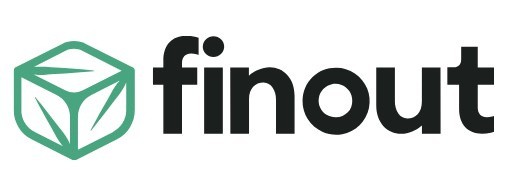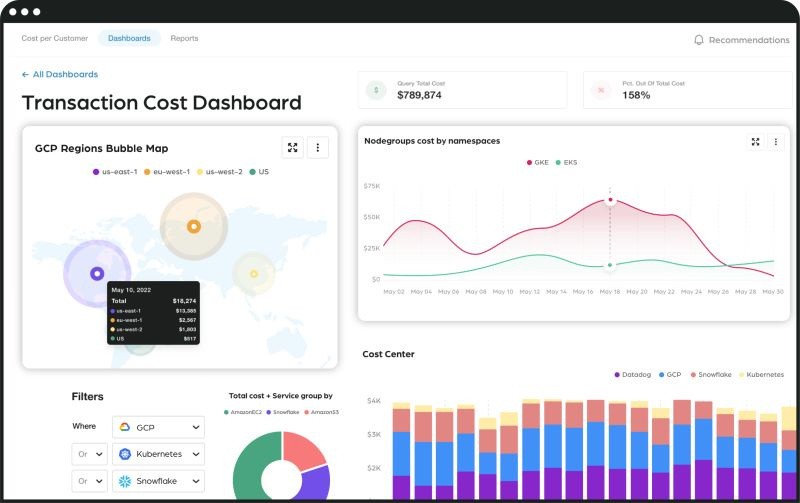
We've all read hundreds of articles about the rise of the cloud. In fact, the pendulum seems to be swinging the other way a bit, with many popular companies (e.g. Basecamp) writing publicly about their move off of cloud and back to on prem. Amazon Prime made the interesting decision to publish a blog post about how moving off of AWS Serverless actually saved them a bunch of money.
Things aren't quite right in the cloud.
That said, the potential of the cloud is undeniable and thousands of modern businesses have scaled on the backs of cloud technologies. Many traditional enterprises are still eager to get at least some of their workloads in the cloud.
So what we have now is a friction between the potential and the reality of the cloud - at the end of the day, the cloud is simply too complex. It's too complex to debug, too complex to operate, too complex to secure, too complex to budget for, etc.
There are many companies trying to help wrangle these complexities so that businesses operating in the cloud can take full advantage of its promises. In this article, we look at 5 of the most promising cloud startups for you to check out.
1 Wing Cloud

Overview
Wing Cloud addresses cloud complexity with solutions that aim to abstract away a lot of the gritty and annoying details about working with the cloud for developers. They recently launched out of stealth with a whopping $20Million in funding and are the creators of the open source project Winglang. This is one of the most hyped open source projects of the year (still in alpha) - it's a programming language that unifies cloud infrastructure and application code into a single programming model that works across AWS, Azure, GCP, Kubernetes, serverless, and more.
Wing Cloud was co-founded by CEO Elad Ben-Israel, creator of myriad open-source projects in the cloud infrastructure space such as the AWS Cloud Development Kit (CDK), CDK for Kubernetes (CDK8s), JSII, and Projen; as well as COO Shai Ber, a former software developer at Microsoft, investor, and founder who went on to sell his company Aniways to Verizon back in 2015. The company's offerings aim to mitigate a range of challenges faced by organizations and their developer teams. These include:
Extended development cycles
Over-reliance on numerous tools
Absence of local development options
Intricate cloud operations
Tensions between development and operational units
Security vulnerabilities
Dependency on specific cloud vendors
The requirement for diverse cloud platforms
It's rare to see a startup get this much attention before even having a generally available commercial product. But if you read enough of their materials, you can see where the vision is headed. Their recent press release states that a "visual cloud management solution" is coming out of beta soon "that provides both developers and operators with a shared, real-time view of an application's architecture and data flow."
With institutional investors like Battery Ventures and angel investors like Amit Agarwal of Datadog behind them - this is definitely a company to watch with meteoric potential.

2 Finout

Overview
Finout correlates business metrics with cloud costs in its FinOps platform, allowing businesses to monitor, manage, and optimize their cloud spending across all cloud providers and services. Their FinOps platform has been proven to significantly reduce cloud spend and waste, while increasing profitability and accountability of teams spending and operating in the cloud.
Key Features
MegaBill: Finout consolidates all cloud providers and 3rd party SaaS services such as Datadog, Snowflake, and more into a single dashboard. From there, a layer of cost governance, allocation, and optimization is applied.
Cost Governance: Finout's agentless cost governance suite enables teams to automatically detect and manage cloud waste, forecast spend, alert on anomalies, and stay on budget while scaling.
Cost Allocation: Finout has developed an instant Virtual Tagging solution on top of the MegaBill, which allows costs to be understood by individual spend, team spend, application spend, or however else FinOps decides it wants to understand budget and spend.
Cost Optimization: Finout's new AI-Powered Cost Optimization for AWS will automatically save companies up to 60% on their AWS bill. Support for other major clouds as well as 3rd party services such as RDS, ElastiCache, Redshift, and OpenSearch is coming soon.

3 Permit.io

Overview
The founders of Permit.io came together after observing a recurring issue in their professional journeys. At esteemed companies like Microsoft and Rookout, they consistently encountered the need to develop Identity Access Management (IAM) systems. Each time, the process was repetitive and time-consuming, leading them to question if there might be a more streamlined and efficient method available.
Recognizing this widespread challenge among developers and the broader tech industry, they decided to establish Permit.io. Their vision was to create a solution that directly addresses this pervasive issue, offering a simpler way to handle IAM processes. As a result, Permit.io provides a platform that makes it straightforward for developers to integrate permission control into their software products. Beyond benefiting developers, Permit.io's innovation extends to the entire organization. With its low-code features, even those without deep technical expertise can effectively manage access and permissions, ensuring a more cohesive and efficient operational environment.
Key Features
The Policy Editor: The policy editor allows you to create multiple types of authorization models, including RBAC & ABAC. The fact that the editor enables no code/low code is a huge productivity boost, especially for product and sales teams that want to manage permissions without having development be a bottleneck.
User management: Users can represent both people and automated entities. Users are assigned to tenants and can then be assigned roles and permissions. The roles and permissions granted to the user will decide what actions in your app will be allowed or denied.
Audit logs: Knowing who has done what in your application is critical for multiple reasons, including security, compliance, and debugging. Audit Logs are a great way to keep an accurate record and are a useful tool both for you and your team as the maintainers of your application.

4 groundcover

Overview
groundcover assists teams in monitoring their Kubernetes applications at scale by locating and detecting the issues and providing insights for fast resolution. It leverages its engineering with advanced technologies to make observability of applications effortless for developers.
It harnesses a new technology called eBPF to collect data directly from the Linux kernel, with no code changes or efforts from the R&D team. It is built for modern production environments, covering the entire Kubernetes stack from applications, logs, metrics, and traces.
Key Features
Developers can detect and secure issues faster through its alerting system. This feature signals the user the health of the Kubernetes application through Slack or email. Each issue is auto-detected and aggregated to facilitate faster insights. Each issue is also assigned a velocity graph which displays its behavior over time and the number of incidents it has caused.
It features a dashboard for visually tracking and displaying key performance metrics, allowing users to monitor the infrastructure and applications' health in real-time. It is also customizable, where queries can be added to gain insight into specific metrics.
groundcover is currently open source. Free to use, it offers full functionality on a single cluster for up to 3 users. For unlimited clusters, users, and premium support, groundcover is sold at a flat, predictable price so users can control their budget without expectations of spikes in cost.
5 Lightlytics

Overview
Lightlytics streamlines cloud SecOps to ensure optimal cloud security. It offers shared context, enabling teams to quickly determine the impact of threats. It can also display how each configuration made can affect the environment of AWS. It is trusted by development and security teams worldwide and used by companies like Sony, TiVo, JamesEdition, and Wego.
Key Features
Lightlytics can house all resources and cross accounts in a single console, with a complete display of how cloud layers interact, with fully attributed configurations, activities, costs, events, and violations. This feature makes it easy to troubleshoot fast, contextualizing configurations that have broken the network, its impact, and its root cause.
The platform can also illuminate cost mysteries, enabling teams to detect anomalies and achieve substantial cost reduction. It displays every application run on AWS and Kubernetes, detailing the cost, activities, events, violations, and other related information.
Lightlytics also offers an instant analysis of security and compliance implications for any configurations made in real-time. It lists the violation according to its severity, enabling teams to prioritize each concern and take action based on its risks. It also displays the impact the violations have caused, whether it's new connections or internet exposure.
Lightlytics also attributes Network and IAM logs to all resources. It displays essential information so users can understand how data and configurations interact. With a built-in anomaly-detection engine, the platform generates alerts for unexpected traffic rejects, IAM errors, unusual machine or user activity, and high traffic volume.
Lightlytics offers unmatched visibility into the performance of cloud applications. Companies leverage the platform for its promise of security and full disclosure of activities.
Conclusion
These top five leading cloud startups provide distinct solutions that improve development, observability, security, cloud cost management and velocity. You'll want to keep an eye on these companies as they've already done big things in 2023 and we expect even more for next year.
ⓒ 2025 TECHTIMES.com All rights reserved. Do not reproduce without permission.




